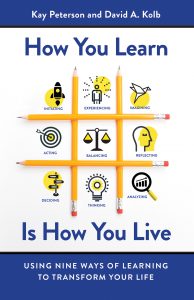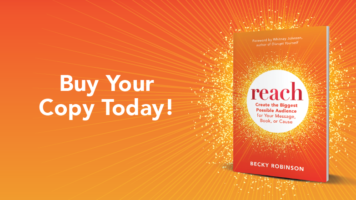Preview Thursday: Make Learning Deliberate

Best of Books
May 31, 2018
Kay Peterson
Topics
Leadership, Learning, Learning Styles, Preview ThursdayThe following is a book excerpt from How You Learn Is How You Live
 While the practices in the book will help you to improve your performance or learn new content, the goal is to pay attention to your own learning process and to become more flexible in managing it. This process is what allows you to transform your life. Deliberate learning requires that you understand your unique way of learning from experience and use it to intentionally direct and control your behavior. Instead of being locked into an unconscious force that operates in the background and guides you automatically, you can use the learning cycle as a guide to help you learn deliberately. E-learning way literally changes your mind, allowing you to process and respond to your experiences differently
While the practices in the book will help you to improve your performance or learn new content, the goal is to pay attention to your own learning process and to become more flexible in managing it. This process is what allows you to transform your life. Deliberate learning requires that you understand your unique way of learning from experience and use it to intentionally direct and control your behavior. Instead of being locked into an unconscious force that operates in the background and guides you automatically, you can use the learning cycle as a guide to help you learn deliberately. E-learning way literally changes your mind, allowing you to process and respond to your experiences differently
To learn deliberately, you first need to become a witness of your own process. Zoom out from your automatic response— the learning style that you prefer—and question whether that style might be limiting what you see as possible. Where could you shift on the learning cycle to increase your effectiveness? Next, choose the learning style that is the best match for your situation and zoom in to use it. This will create a new experience, and the cycle continues again.
Lynne’s favored style of Deciding meant that her go-to response for any situation allowed her to critically evaluate a situation and commit to a solution. Because she had easy access to the Acting and Initiating styles too, she was quick to implement a practical fix to a problem. This command-and-control approach had made her successful as a director in a health-care organization and carried over to the way she ran her home and raised her kids. As Lynne developed her learning flexibility and the ability to evaluate her process of learning, she recognized that this approach was not the best match with her twenty-year-old daughter Danielle.
One night, when Danielle arrived home from college upset from something that had happened, Lynne stopped herself from leading with her automatic Deciding style. She zoomed out to witness where she was on the learning cycle versus where the best match for the situation might be. Lynne actually used the quick processing of her Deciding style to choose the opposite styles of learning in the moment: Experiencing, Imagining, and Reflecting. In uncharacteristic fashion, Lynne did not try to diagnose or fix a problem. She simply sat down, connected with her daughter through her presence, and listened. Instead of tapping her problem-solving prowess, she tapped into her empathy. Danielle said that she had never felt more heard or understood. When Lynne shifted her approach to learning in the moment by zooming out to see what was needed, she increased her effectiveness with her daughter and learned about herself in the process. The intentional process is key.
Learning how to learn is a lifelong process. The 10,000 hours that some say is required to master a skill may be a mythical number, but the number of learning cycles we go through in our lifetime is countless. Being deliberate about the learning process can improve our effectiveness as we go through these cycles.
© 2017 Kay Peterson and David A. Kolb All Rights Reserved.







